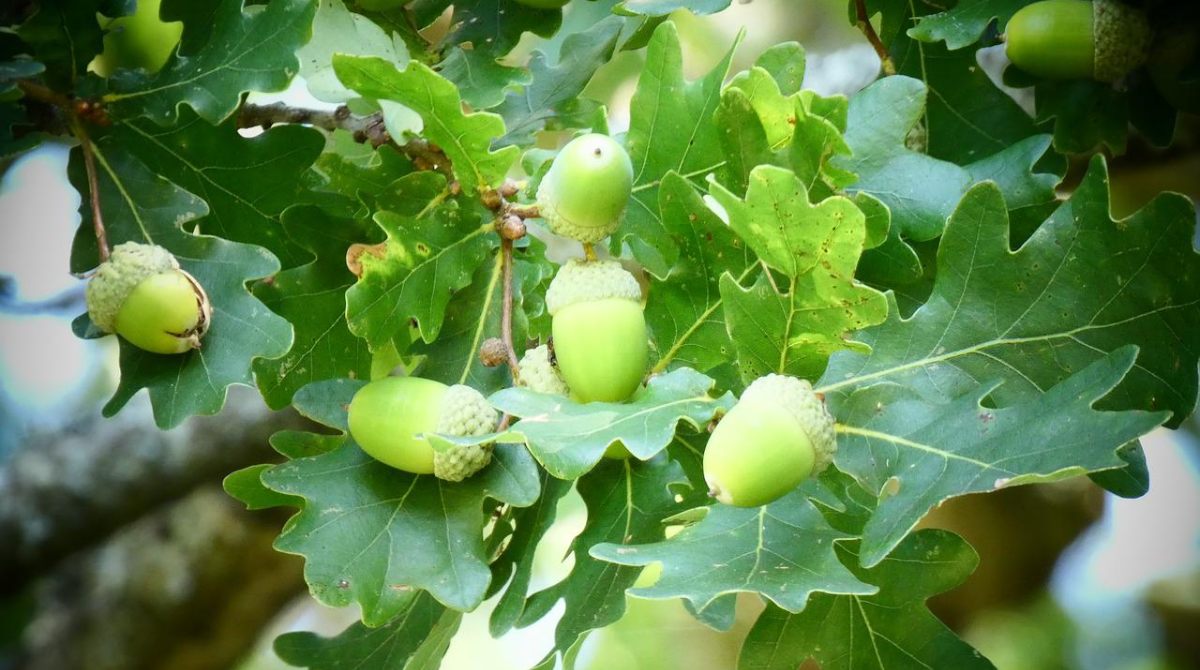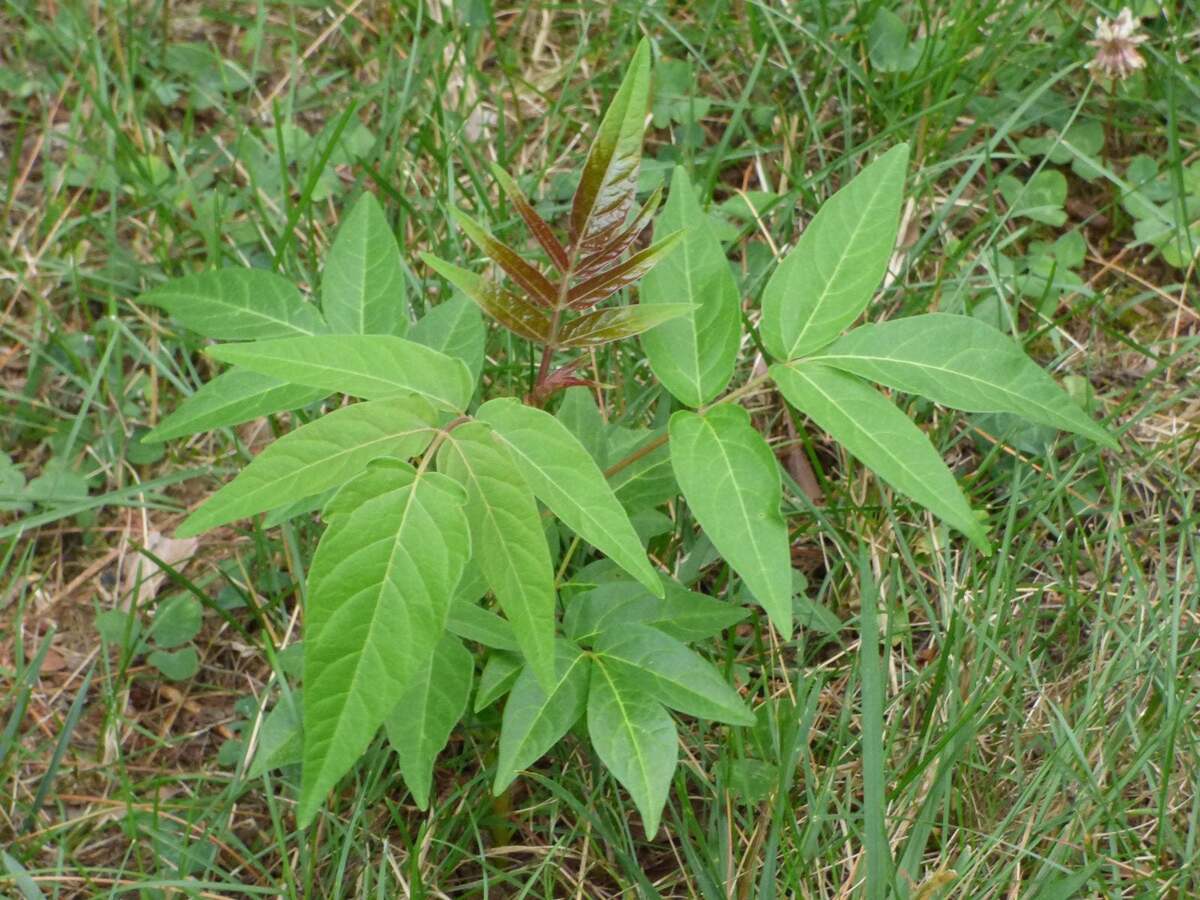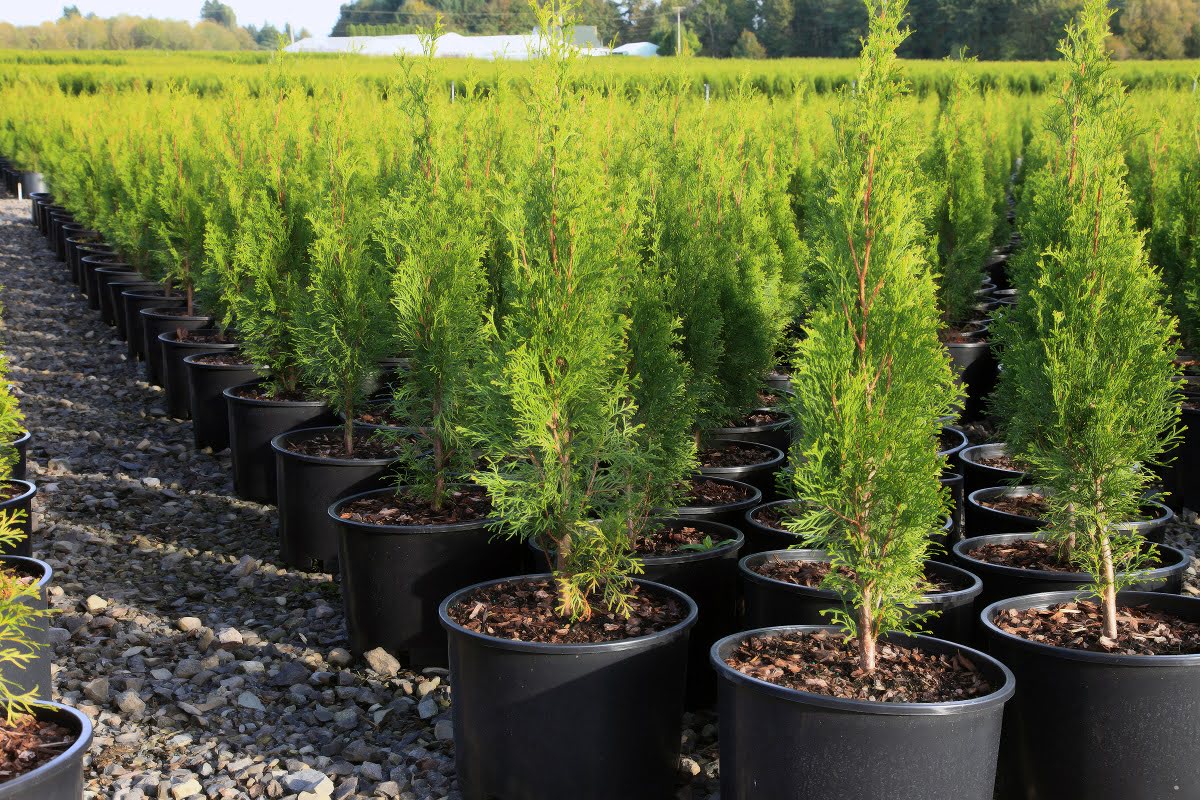Home>Gardening News and Trends>Latest News>Trees Shrubs And Lawns Are Covered For Damage By Which Of The Following Perils


Latest News
Trees Shrubs And Lawns Are Covered For Damage By Which Of The Following Perils
Modified: January 22, 2024
Get the latest news on which perils cover damage to trees, shrubs, and lawns. Stay informed and protect your outdoor spaces with the most up-to-date information.
(Many of the links in this article redirect to a specific reviewed product. Your purchase of these products through affiliate links helps to generate commission for Chicagolandgardening.com, at no extra cost. Learn more)
Table of Contents
Introduction
When it comes to protecting your property, it’s essential to have insurance coverage that extends beyond the walls of your home. Many homeowners are surprised to learn that trees, shrubs, and lawns can also be covered for damage caused by specific perils. This coverage can provide peace of mind and financial protection in the event of unforeseen circumstances.
Insurance policies typically cover damage to trees, shrubs, and lawns caused by specific perils such as storms, lightning strikes, fire, vandalism, and even vehicle collisions. These perils can pose a significant threat to the health and aesthetics of your outdoor landscaping, and the costs of repair or replacement can quickly add up.
Whether you have a well-manicured garden, a lush lawn, or a variety of trees and shrubs on your property, knowing what perils are covered and the extent of coverage available is essential. This article will delve into the intricacies of insurance coverage for trees, shrubs, and lawns, providing you with a comprehensive understanding of the protection available to you.
As a homeowner, it’s crucial to review your insurance policy carefully to determine the specific coverage and limitations related to your outdoor landscaping. By understanding the coverage provided under your policy, you can make informed decisions regarding the maintenance and care of your trees, shrubs, and lawns and ensure that you have adequate insurance coverage in place.
This article will explore the various perils that are typically covered, the specific coverage limits and deductibles associated with outdoor landscaping, and the process of filing a claim in the event of damage. By the end, you will have a comprehensive understanding of how to protect your trees, shrubs, and lawns from various perils and make the most of your insurance coverage.
Overview of Covered Perils
Insurance coverage for trees, shrubs, and lawns typically extends to damage caused by specific perils. These perils can vary depending on the insurance policy and provider, but there are several common perils that are often covered.
One of the most common perils covered is storm damage. This includes damage from severe winds, heavy rain, hail, or lightning strikes. Storms can wreak havoc on trees and shrubs, causing branches to break, trees to uproot, or significant damage to lawns. Insurance coverage can help cover the costs of removing fallen trees, repairing damaged branches, or restoring the affected landscaping.
Fire is another peril that is typically covered. Fires can quickly spread and cause extensive damage to trees, shrubs, and lawns. Insurance coverage can assist with the costs of removing charred trees, replanting shrubs, and reseeding lawns in the aftermath of a fire.
Vandalism is also a common peril covered by insurance policies. Unfortunately, acts of vandalism can cause significant damage to outdoor landscaping, including destruction of trees, damage to shrubs, or intentional harm to lawns. Insurance coverage can help reimburse the costs of repairing or replacing the damaged elements.
Additionally, insurance coverage may extend to damage caused by vehicle collisions. Accidents involving vehicles can lead to substantial damage to trees and shrubs, as well as lawns. Insurance can assist with the costs of removing damaged trees, replanting shrubs, and restoring lawns affected by a collision.
It is important to note that the specific perils covered and the extent of coverage can vary depending on your insurance policy and provider. It is recommended to review your policy carefully to understand the perils that are included and any exclusions that may apply.
By having a thorough understanding of the perils covered, you can ensure that you have the appropriate insurance coverage in place to protect your outdoor landscaping from unexpected damage. Whether it’s storm damage, fire, vandalism, or vehicle collisions, insurance can provide the financial assistance needed to restore and revive your trees, shrubs, and lawns.
Trees
Trees are not only a beautiful addition to your property but also play a crucial role in providing shade, improving air quality, and enhancing the overall aesthetics. It’s essential to understand the coverage and protection available for trees under your insurance policy.
Insurance coverage for trees generally includes damage caused by covered perils, such as storms, lightning strikes, fire, vandalism, and vehicle collisions. If a storm or severe winds cause a tree to fall and damage your property, your insurance policy may cover the costs associated with removing the fallen tree, repairing any damage it caused, and potentially even replacing the tree itself. However, it’s important to note that coverage may vary depending on the policy and extent of damage.
When it comes to trees, insurance coverage typically applies to trees that are located within a certain distance of your primary dwelling. For example, trees within a specific radius of your home may be covered, while those located further away may not. This distinction helps insurers differentiate between trees that pose a potential threat to the structure and those that do not.
It’s crucial to review your insurance policy to determine the coverage limits and any exclusions related to trees. Some policies may have a maximum cap on the amount of coverage available for each tree, while others may have specific exclusions for certain types of trees or specific causes of damage.
It’s important to note that insurance policies often do not cover damage caused by tree disease or decay. Routine maintenance, including trimming dead or diseased branches, is typically the responsibility of the homeowner. However, if a tree becomes diseased or decays to the point where it poses a significant risk of falling and causing damage, your insurance policy may cover the cost of removing the tree.
When it comes to filing a claim for tree damage, it’s essential to document the extent of the damage and gather evidence. Take photographs of the fallen tree, any damage it caused, and any other relevant information that can support your claim. Contact your insurance provider as soon as possible to initiate the claims process and provide them with the necessary documentation.
Overall, trees can enhance the beauty and value of your property, but they can also pose certain risks. Understanding the coverage available for trees under your insurance policy can help you protect your property and finances in the event of tree-related damage caused by covered perils.
Shrubs
Shrubs are an integral part of any landscaping, providing privacy, beauty, and structure to your outdoor space. Just like trees, it’s important to understand the coverage and protection available for shrubs under your insurance policy.
Insurance coverage for shrubs typically aligns with the coverage provided for trees. Damage caused by covered perils, such as storms, lightning strikes, fire, vandalism, and vehicle collisions, is usually included in the policy. If a storm damages your shrubs or if they are vandalized, your insurance policy may cover the costs of repairing or replacing them.
Similar to trees, insurance coverage for shrubs may have specific limits and exclusions. Coverage limits can vary depending on your policy, and certain types of shrubs may have restrictions or exclusions. It’s important to review your policy carefully to understand the extent of coverage available for your shrubs.
Regular maintenance and care of your shrubs, such as pruning and fertilizing, are typically the responsibility of the homeowner and not covered by insurance. However, if your shrubs are damaged to the point where they need to be replaced or if they are destroyed by a covered peril, your insurance policy can provide the necessary financial assistance.
When filing a claim for shrub damage, it’s crucial to document the damage and gather evidence. Take photographs of the damaged shrubs, gather any relevant information, and contact your insurance provider right away to initiate the claims process. Providing them with the necessary documentation will help expedite the claim and ensure a smooth resolution.
Having insurance coverage for your shrubs can provide peace of mind and financial protection in the event of unforeseen circumstances. It allows you to maintain a well-maintained and aesthetically pleasing outdoor space without worrying about the potential costs of repairing or replacing damaged shrubs.
Remember, insurance coverage for shrubs may vary depending on the policy and provider, so it’s important to review your specific policy to understand the coverage and any limitations that may apply.
By understanding the coverage available for shrubs, you can make informed decisions regarding their care and maintenance, all while ensuring that you have the necessary protection in place to safeguard your outdoor landscaping investment.
Lawns
Your lawn is often the centerpiece of your outdoor space, providing a lush and inviting area for relaxation and recreation. While it may not be obvious, insurance coverage for lawns can be beneficial in certain situations. Understanding the coverage available for lawns under your insurance policy is crucial for protecting this essential element of your property.
Insurance coverage for lawns typically falls under the broader category of outdoor landscaping coverage. This coverage is designed to protect against damage caused by covered perils like storms, lightning strikes, fire, vandalism, and vehicle collisions. If your lawn is damaged by any of these perils, your insurance policy may cover the costs of repair, restoration, or replacement.
It’s important to note that insurance coverage for lawns primarily applies to severe or extensive damage. Minor issues such as regular wear and tear, natural aging, or routine maintenance are generally not covered by insurance. Regular care and maintenance of your lawn, including mowing, watering, and fertilizing, are your responsibility as a homeowner.
In the case of severe damage to your lawn, such as extensive fire damage or complete destruction due to a storm, your insurance policy may cover expenses such as reseeding, sod replacement, or even hiring professional landscapers to restore your lawn back to its original condition.
When filing a claim for lawn damage, it’s crucial to document the extent of the damage thoroughly. Take photographs or videos that clearly show the damaged areas and gather any relevant information that can support your claim. Contact your insurance provider as soon as possible to initiate the claims process and provide them with the necessary documentation.
It’s essential to review your insurance policy carefully to understand the specific coverage and limitations related to your lawn. Pay attention to any maximum coverage limits or deductibles that apply, as well as any exclusions that may impact your ability to file a claim.
Insurance coverage for lawns provides a valuable safety net in the event of significant damage caused by covered perils. It allows you to restore and revive your lawn without shouldering the full financial burden. By having insurance coverage in place, you can continue to enjoy a vibrant and well-maintained lawn that enhances the beauty and value of your property.
Common Exclusions
While insurance coverage for trees, shrubs, and lawns can provide valuable protection, it’s important to understand that there are certain exclusions that may limit or restrict coverage. These exclusions vary depending on the insurance policy and provider, but there are a few common exclusions to be aware of.
One common exclusion is damage caused by pests or diseases. Insurance policies typically exclude coverage for damage or loss that results from infestations or diseases that affect trees, shrubs, or lawns. It is considered the responsibility of the homeowner to maintain and address these issues through routine care and maintenance.
Another exclusion to be aware of is damage caused by neglect or lack of maintenance. If damage or loss occurs due to neglecting proper care and maintenance, your insurance policy may not cover the costs. This includes failure to adequately trim trees, failing to address underlying issues with shrubs, or neglecting to provide proper watering and lawn care.
Additionally, damage to trees, shrubs, or lawns caused by normal wear and tear or gradual deterioration is typically excluded from coverage. Insurance is designed to protect against sudden and accidental damage rather than expected wear and tear over time.
It’s important to review your insurance policy carefully to understand the specific exclusions that apply to your coverage. By understanding these exclusions, you can take the necessary steps to mitigate the risks and address any potential issues before they escalate.
While certain exclusions exist, it’s crucial to maintain proper care and maintenance of your outdoor landscaping to minimize the likelihood of damage or loss. Regularly inspect your trees, shrubs, and lawns for signs of pests, diseases, or other issues, and address them promptly to reduce the risk of extensive damage.
By being aware of common exclusions and taking proactive measures, you can ensure that your trees, shrubs, and lawns remain healthy and vibrant while maximizing the benefits of your insurance coverage.
Coverage Limits and Deductibles
When it comes to insurance coverage for trees, shrubs, and lawns, it’s essential to understand the coverage limits and deductibles associated with your policy. These factors play a significant role in determining the financial protection provided by your insurance coverage.
Coverage limits refer to the maximum amount of coverage available for each tree, shrub, or lawn. Insurance policies typically have a per-item or per-incident limit, meaning that the coverage amount is capped for individual elements or events. It’s crucial to review your specific policy to understand the coverage limits that apply to your outdoor landscaping.
Deductibles, on the other hand, are the out-of-pocket expenses that you must pay before your insurance coverage kicks in. This means that if you need to file a claim for tree, shrub, or lawn damage, you would be responsible for paying the deductible amount before the insurance company covers the remaining costs. Deductibles can vary depending on your policy, and higher deductibles often result in lower insurance premiums.
For example, if your policy has a coverage limit of $1,000 per tree and a $500 deductible, and a tree on your property sustains $2,500 worth of damage from a storm, your insurance would cover $1,000, and you would be responsible for paying the $500 deductible.
It’s important to review your policy carefully to understand the coverage limits and deductibles that apply to your trees, shrubs, and lawns. This will help you determine the level of financial protection you have in the event of damage or loss.
Additionally, keep in mind that coverage limits and deductibles can vary depending on the insurance company and policy. It’s recommended to compare policies and obtain quotes from multiple insurance providers to ensure you have adequate coverage at a reasonable cost.
Regularly reviewing and updating your insurance coverage is advisable, especially if you make significant changes or additions to your outdoor landscaping. This will ensure that your coverage aligns with the current value of your trees, shrubs, and lawns.
Understanding the coverage limits and deductibles associated with your insurance policy is crucial for making informed decisions and assessing the level of protection provided for your outdoor landscaping. By having a clear understanding of these factors, you can ensure that you have the appropriate coverage in place to protect your trees, shrubs, and lawns in the event of damage or loss.
Filing a Claim
If your trees, shrubs, or lawns sustain damage that is covered by your insurance policy, it’s important to understand the process of filing a claim. Properly navigating the claims process can help ensure a smooth and efficient resolution to your claim.
The first step in filing a claim is to document the damage. Take photographs or videos that clearly show the extent of the damage to your trees, shrubs, or lawn. This visual evidence will be crucial when filing your claim and can help support your case with the insurance company.
Contact your insurance provider as soon as possible to initiate the claims process. They will guide you through the necessary steps and provide guidance on the documentation required. Be prepared to provide detailed information about the incident that caused the damage, including the date, time, and any relevant details.
When filing a claim, make sure to provide all the necessary documentation to support your case. This can include photographs, videos, receipts for tree or shrub replacement, and any other relevant information that can help validate your claim. The more comprehensive and detailed your documentation, the smoother the claims process is likely to be.
After submitting your claim, the insurance company will review the information provided and may request additional documentation or clarification. It’s important to respond promptly and provide any requested information to avoid delays in the claims process.
Once your claim is approved, the insurance company will provide you with the details of the coverage. This will include information on the amount of compensation you are eligible to receive for repairing or replacing your damaged trees, shrubs, or lawn. Be aware that the claim payout may be subject to deductibles and the coverage limits specified in your policy.
Depending on the scope and complexity of the damage, the insurance company may offer recommendations or require you to seek professional assistance for the repair or restoration work. It’s important to follow their instructions to ensure that the work is done properly and meets the necessary standards.
Throughout the claims process, maintain open and clear communication with your insurance provider. Ask questions, seek clarification if needed, and stay informed about the progress of your claim. A good line of communication can help expedite the resolution and ensure a satisfactory outcome.
Remember, each insurance company may have specific procedures and requirements for filing a claim. It’s essential to familiarize yourself with your policy’s claims process and follow the guidelines outlined by your insurance provider.
By understanding the steps involved in filing a claim and being proactive in documenting the damage and providing necessary information, you can navigate the claims process smoothly and effectively recover the costs associated with the damage to your trees, shrubs, or lawns.
Conclusion
Insurance coverage for trees, shrubs, and lawns is an important aspect of protecting your property and maintaining the beauty of your outdoor landscaping. Understanding the coverage available, the perils covered, and the limitations of your policy can provide peace of mind and financial security.
From storms and lightning strikes to fire, vandalism, and vehicle collisions, insurance coverage for trees can help cover the costs of removing fallen trees, repairing damaged branches, and potentially even replacing trees. Similarly, coverage for shrubs can assist with the costs of repairing or replacing shrubs damaged by covered perils. And, coverage for lawns can help restore and revive your lawn after severe damage caused by storms, fire, or other covered perils.
While insurance provides valuable protection, it’s important to be aware of common exclusions, such as damage caused by pests, neglect, or normal wear and tear. Understanding these exclusions will help you take necessary precautions to minimize risks and address issues before they escalate.
Reviewing your insurance policy to understand coverage limits and deductibles is crucial for assessing the level of financial protection you have for your outdoor landscaping. Regularly updating your policy and documentation can ensure that your coverage aligns with the current value of your trees, shrubs, and lawns.
In the event of damage, the process of filing a claim should be initiated promptly. Documenting the damage with photographs or videos, providing all necessary documentation, and maintaining open communication with your insurance provider can help expedite the claims process and ensure a smooth resolution.
Having the appropriate insurance coverage for your trees, shrubs, and lawns allows you to enjoy the beauty of your property without the worry of potential financial burdens. It provides you with the peace of mind that you can restore and maintain your outdoor landscaping in the event of unforeseen damage caused by covered perils.
Remember to review your policy, understand the coverage provided, and take proactive measures to protect and maintain your trees, shrubs, and lawns. By doing so, you can make the most of your insurance coverage and continue to enjoy a well-manicured and vibrant outdoor space for years to come.






